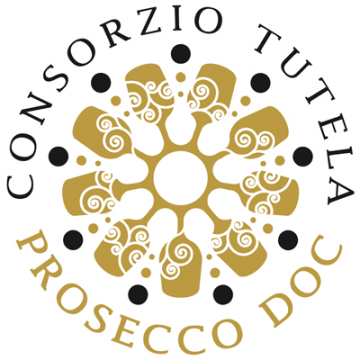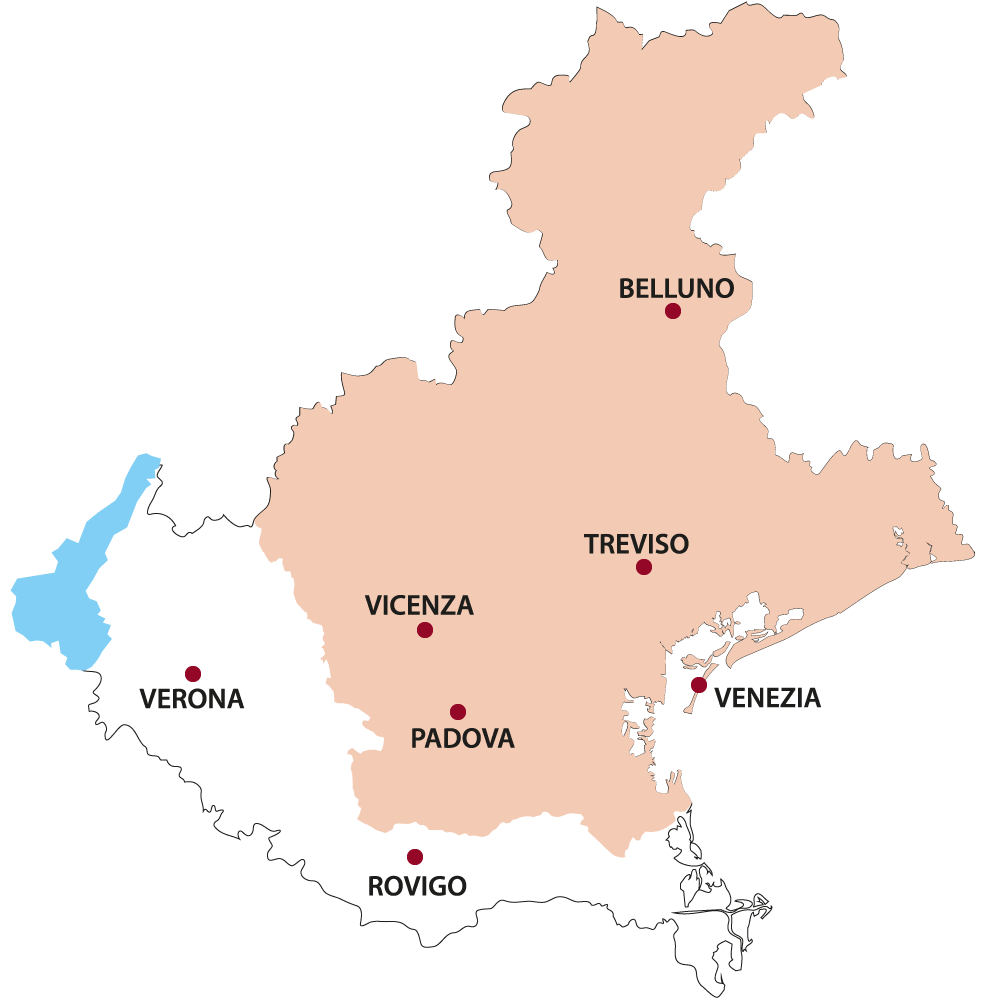

Zona di produzione
The Consorzio di Tutela Prosecco D.O.C. was established in 2009, as a result of a small “revolution” concerning one of the top wines of Italian oenology. The Prosecco produced in the area of Conegliano-Valdobbiadene has obtained recognition as a D.O.C.G., acknowledging the quality and history of a wine, stemming from its ties with the territory, which is unique in its genre. At that point it was necessary to protect the Prosecco wine historically produced in Veneto and Friuli Venezia Giulia with the D.O.C., to safeguard it from competition and from the risk of counterfeiting. Hence the change of the Prosecco D.O.C. denomination, that no longer refers to the vine that can be grown worldwide, but to the wine itself. The new name of the wine, therefore is Glera, while only the wine produced in the area of the D.O.C. can boast the name “Prosecco”. The production area comprises nine provinces in Veneto and Friuli Venezia Giulia: Treviso, Padua, Venezia, Vicenza, Belluno, Pordenone, Gorizia, Trieste, Udine, making it the biggest Italian D.O.C. in terms of territorial extent. The new D.O.C. now encompasses and replaces the existing I.G.T. classification (Prosecco Colli Trevigiani, Prosecco Marca Trevigiana, Prosecco del Veneto, Prosecco Alto Livenza, Prosecco delle Venezie) in a single territory. The denomination also provides the possibility to specify the area of origin of the grapes for the provinces of Treviso and Trieste. Twenty thousand hectares of vineyards, for over 10,000 winemakers and 240 million bottles produced in 2013: the new Consortium Prosecco D.O.C. aims at challenging international markets with these numbers, leveraging on the notoriety and quality of a wine that does not fear comparisons. The official logo is a sun encircled by 9 glasses, representing the only 9 provinces in which Prosecco D.O.C. can be produced. The decision to adopt the state seal, the compulsory label reserved only for D.O.C.G. (Denomination of Controlled and Guaranteed Origin), was a significant and voluntary choice made by the producers members of the Consortium, aimed at granting further protection to the quality of the product, certified by the alphanumeric acronym with which it is possible to trace the entire productive row and to contrast adulteration. Starting from 1st January 2012, the state seal is applied to all the bottles on the market.
Caratteristiche e tipologie vino
A consolidated and glorious tradition has established Prosecco as a wine cherished throughout the world. In Veneto the production of this wine is present especially in the hilly areas of the province of Treviso, but also in the provinces of Padua and Vicenza, and in some other areas of the plain. The Prosecco is appreciated and sought-after by the general public for its versatility in combinations, its mellow and fresh taste, and its scent which ranges from fruity to floral notes, depending on the variety: fruit, apple, pear, but also citrus, almonds, honey and a rich bouquet of flower essences. The grapes used for the wine with the controlled denomination of origin “Prosecco” must ensure a minimum natural strength of 9.50% vol. and those used for the production of wines with the controlled denomination of origin “Prosecco” Spumante and Sparkling must ensure a minimum alcoholic strength of 9% vol., provided that the destination of the grapes to be processed is expressly indicated in the official documents of the cellar and the annual grape harvest report. It is above all the bubbles in the two versions of spumante and frizzante which are required as per the rules of production, which determine the success of this wine, which producers of Veneto and Friuli Venezia Giulia have chosen to protect with the D.O.C. mark throughout the territory historically devoted to Prosecco. The spumante type must be obtained exclusively by natural fermentation in autoclave, using the musts or wines obtained from grapes of the variety specified by the rules of production. This type must be marketed in the brut, extra dry, dry and demi-sec versions. The frizzante type must be obtained exclusively by natural fermentation in bottle or autoclave, using the musts or wines obtained from grapes of the variety specified by the rules of production. The maximum yield of grapes into wine must not exceed 70%: in other words, from 100 kilograms of grapes a maximum of 70 litres of wine may be obtained. Where output exceeds these specified limits, but is less than 80%, the surplus will not be entitled to the denomination of origin. Where the yield of wine from grapes exceeds 80%, however, then the entire production forfeits the right to the denomination. Winemaking operations, including the process of making spumante and frizzante wine; that is to say the oenological practices for re-fermentation, stabilisation, and sweetening in the types where it is permitted, as well as the bottling and packaging; must all be carried out in the territory of the D.O.C. as established by the rules of production. Taking into account traditional production situations, however, operations for making “Prosecco” spumante and “Prosecco” frizzante types, as well as their bottling, may be carried out, by means of special license issued by the Ministry of agricultural policies, food and forestry, on the advice of the regional administrations of Veneto and Friuli-Venezia Giulia, in establishments situated in provinces bordering the area of production, provided that the companies submit a reasoned request, accompanied by documentation which prove the use of traditional practices on a continuous basis for at least 5 vintages prior to the entry into force of the rules of production. Traditionally the types of bottles used are different depending on the type of wine: the Renana or the Borgognona bottle for Tranquillo types, the Champagnotta for Frizzante, and the classic Prosecco for Spumante. Only the use of traditional glass bottles with colours ranging from shades of white, yellow, green, brown, greyblack of variable intensity are allowed for the packaging of Spumante and Sparkling wines. Once the wine has been certified (suitable to control), it may be marketed under the trademark Prosecco DOC and with the tax seal for the protection of the consumer. The Prosecco must be bottled, and cannot be marketed in containers other than bottles.
Grapes
-
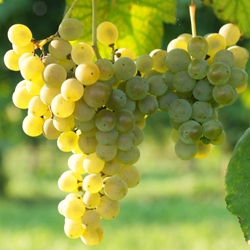
GLERA
-
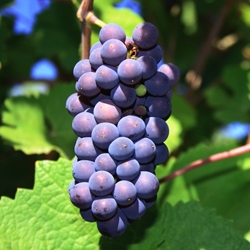
PINOT GRIGIO
-
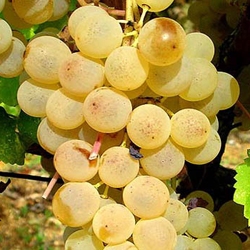
VERDISO
-
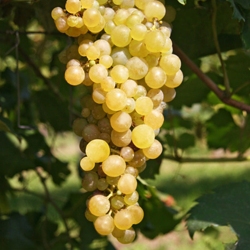
PERERA
-
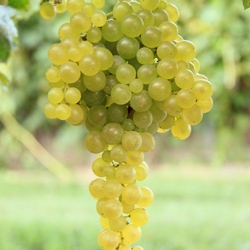
GLERA LUNGA
The wine with the Prosecco controlled denomination of origin must be obtained from grapes coming from vineyards constituted with the Glera vine, a native vine in north-eastern Italy. The following varieties of vines: Verdiso, Bianchetta trevigiana, Perera, long Glera, Chardonnay, Pinot Blanc, Pinot Gris and Pinot Noir (vinified in white), suitable for cultivation in the area of production of the grapes, may contribute in the enterprise, singularly or in conjunction up to a maximum of 15%. The harvest is a crucial moment, followed by the Consortium for Protection which controls the ripening and harvesting operations in the various areas. The pressing normally occurs with machines that act gently on the grapes, so as to extract only the free-run must that comes from the heart of the berry. After pressing, the turbid must is left to rest in a cold environment at a temperature of 5º-10ºC in stainless steel tanks. After approximately 10-12 hours, the clear part of the must is separated from the deposit and fermentation is initiated. Vinification occurs thanks to yeasts which provoke the alcoholic fermentation, and takes place in stainless steel tanks at a constant temperature of 16º-18ºC, lasting for about 15-20 days. The different batches of base wine present in the cellar, after a careful tasting, are then assembled: wines that up to this time have been kept separate in origin, harvest time and organoleptic characteristics, are combined in precise proportions, so as to achieve a perfect balance between all the components.
White Wines
PROSECCO
Colour: straw-like yellow
Bouquet: fine, caratteristico, fruttato, tipico delle uve di provenienza;
Taste: da secco ad amabile, fresco e caratteristico;
Alcoholic Strength minimum total volume: 10,50%
Accompaniments: antipasti di pesce, verdure, primi ai frutti di mare, pesce al forno, tutto pasto.
PROSECCO SPUMANTE
Colour: giallo paglierino più o meno intenso, brillante;
Bouquet: fine, caratteristico, fruttato, tipico delle uve di provenienza;
Taste: da brut a demi-sec (semisecco), fresco e caratteristico;
Alcoholic Strength minimum total volume: 11,00%
Accompaniments: Antipasti, dolci e pasticceria secca.
Foam: fiori e frutta bianca;
PROSECCO FRIZZANTE
Colour: giallo paglierino più o meno intenso, brillante;
Bouquet: fine, caratteristico, fruttato, tipico delle uve di provenienza;
Taste: da secco ad amabile, fresco e caratteristico;
Alcoholic Strength minimum total volume: 10,50%
Accompaniments: antipasti e primi piatti non elaborati, anche a base di pesce.
Foam: evidente sviluppo di bollicine;
